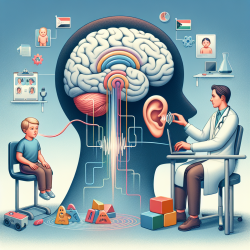Introduction
The use of neuroenhancement drugs (NDs) has been a topic of increasing interest, particularly in the context of cognitive enhancement among young adults. A recent study titled Use of Neuroenhancement Drugs: Prevalence, Frequency and Use Expectations in Switzerland sheds light on this phenomenon within the Swiss male population. This blog post will explore the study's findings and discuss how practitioners can apply these insights to improve their skills and outcomes for children and young adults.
Study Overview
The study involved a sample of 5,967 young Swiss men, examining their use of six types of NDs, including ADHD medication, antidepressants, and wakefulness medication. The research aimed to estimate the prevalence of ND use, explore use expectations, and study the association between academic status and ND use.
Key Findings
- Approximately 3% of participants reported using at least one ND in the past year.
- ADHD medication was the most prevalent type of ND used.
- ND use patterns differed based on academic status, with college students using NDs less frequently than non-college men.
Implications for Practitioners
Understanding the motivations and patterns of ND use is crucial for practitioners working with young adults. Here are some ways practitioners can leverage this study's findings:
- Tailored Interventions: Recognize that college students may use NDs for cognitive enhancement during exams, while non-college men may use them more frequently for other purposes. Tailor interventions accordingly.
- Educational Programs: Develop educational programs that address the potential risks and misconceptions about NDs, particularly focusing on non-college populations who may use these drugs more frequently.
- Monitoring and Support: Implement monitoring systems to identify ND use patterns and provide support to those who may be at risk of misuse or dependency.
Encouraging Further Research
While this study provides valuable insights, there is still much to learn about ND use in different populations. Practitioners are encouraged to engage in further research to explore the long-term effects of ND use and develop more effective intervention strategies.
Conclusion
The findings from the study on ND use in Switzerland highlight the importance of understanding the diverse motivations and patterns of use among young adults. By applying these insights, practitioners can enhance their skills and contribute to better outcomes for children and young adults.
To read the original research paper, please follow this link: Use of Neuroenhancement Drugs: Prevalence, Frequency and Use Expectations in Switzerland.










